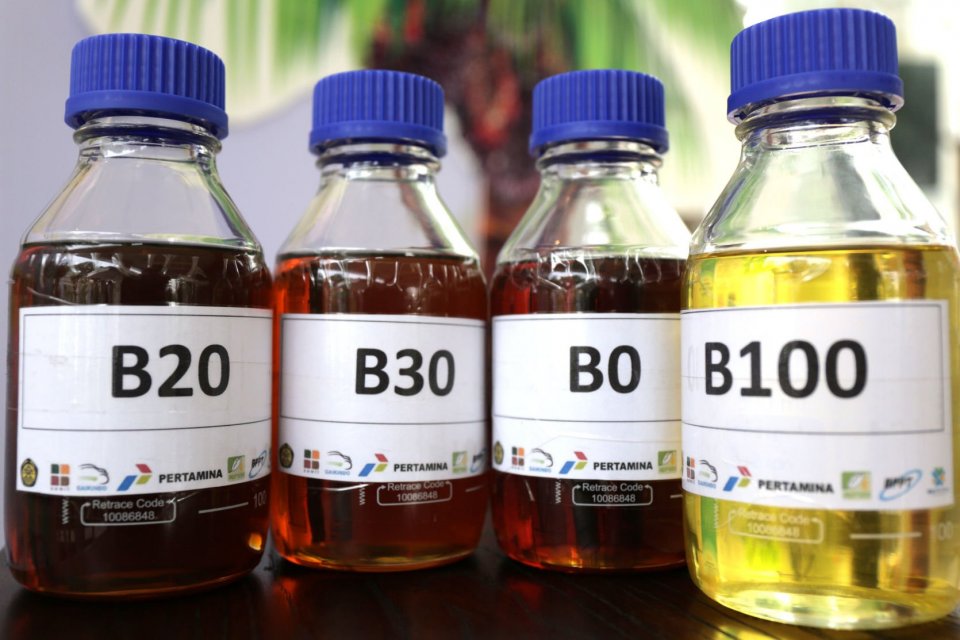Opportunities and Challenges
Indonesia is the world’s largest producer of Palm Oil. Palm Oil is an edible vegetable oil that is produced from the fruit of oil palm trees. As compared to other oil crops such as sunflower, rapeseed, or soybean it has the highest yield of oil, which makes it very efficient and popular among the farmers. It needs far less land than required by other crops to produce the same amount of oil. That makes Palm Oil the least expensive vegetable oil.
In Indonesia, diesel fuel accounts for about 43% of Indonesia’s land transportation energy use and about 40% of it is imported. Since now Indonesia is a net importer of petroleum products, indigenous production of diesel will reduce its dependence on oil imports and save foreign exchange. Therefore the government decided as a policy to manufacture Biodiesel from Palm Oil. Biodiesel can be used in its pure form or it can be blended with petroleum normally around 20% to 30%.
Indonesia’s biofuels program is a key component of its National Energy Policy. The government has implemented a mandated policy on the use of renewable energy of using biodiesel as a mixture of fuel oil. In 2018 the government authorized the use of a mixture of biofuel and diesel fuel, specifically the utilization of 20% biodiesel as a mixture with diesel fuel in all sectors of fossil fuel users.
Biodiesel is produced by using a chemical reaction called trans-esterification. It is quite an economical and relatively simple process that only requires low temperatures and pressures. It has a maximum conversion yield of up to 98%. In the chemical process fats and oils reacts with alcohol to form esters, biodiesel, and glycerol. There are factories in various locations in Indonesia that produce Biodiesel which is then transported to the petroleum refineries and there it is mixed with petroleum products and distributed by the state oil company Pertamina throughout the country.
Palm Oil-based agriculture has reduced poverty within the country and particularly improved the welfare and living standards for local farmers. Although the increased palm oil production achieved through an expansion in the area of cultivated land remains the subject of debate, it is expected that biodiesel needs can be met without further expansion of forest land and the conversion of peatlands to palm oil plantations.
Reducing the burning of fossil fuel and using biofuels can reduce carbon emission and Indonesia can meet the Paris agreement goals. One of the major advantages of Biodiesel is that it is very environmentally friendly as it is non-toxic and is naturally biodegradable. In the event of an accidental spill, the environmental consequences are far less significant as compared to that of a fossil fuel spillage. Biodiesel has another advantage of having a higher flash point as compared to fossil diesel and so it less prone to catch fire in case of an accident.
Biodiesel produced from Palm Oil in Indonesia was estimated to have lower production costs. However, with the fall of fossil fuel prices globally, it has become more difficult to justify the cost of Biodiesel. This is the biggest challenge that is facing the Biodiesel industry. Biodiesel prices in Indonesia are currently significantly more expensive than the base diesel fuel price, especially after a diesel subsidy. To ensure the success of the blending mandate, the Indonesian government provides a subsidy to biofuel producers.
Indonesia is trying to improve the efficiency of the production of Biodiesel and keeping its price down. The production and use of Biodiesel would result in reducing its dependence on fossil fuel, increase the share of renewable energy, and reduce greenhouse gas emissions in the country. Producers of Biodiesel in other countries can look at the Indonesian model and see if they can use Palm Oil to produce Biodiesel and gain some of the same advantages.

